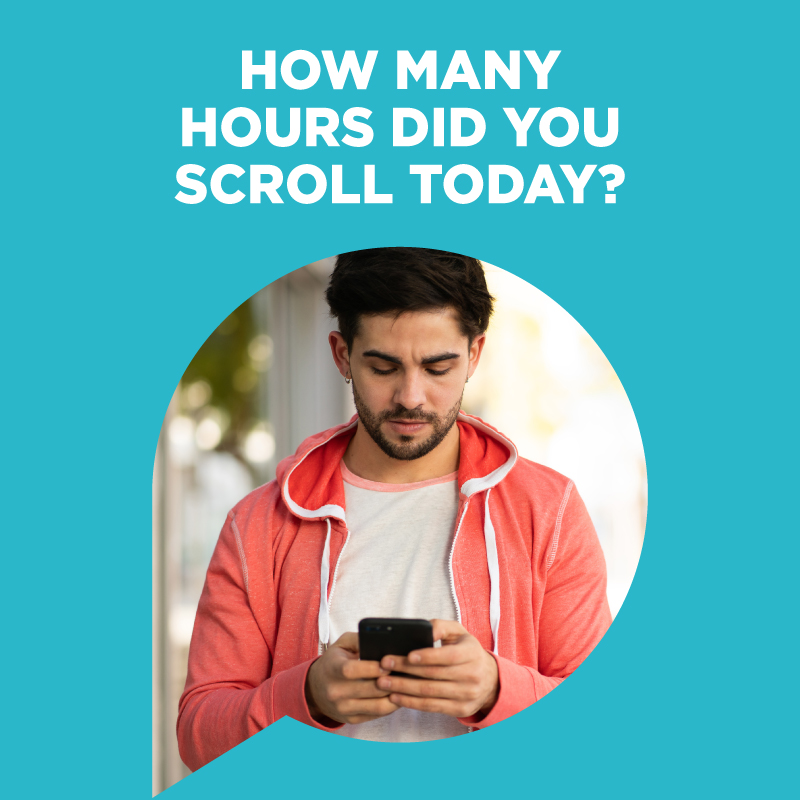

The Digital Pulse
Digital life is no longer a separate part of the day. It blends into mornings, commutes, conversations, work, distractions and even sleep routines. To understand how people experience their screens, apps and online habits, The Panel Station ran a Pulse Study exploring how digital routines actually feel today.
The responses reveal a lifestyle shaped by long screen hours, fast switching, rising distractions and a growing interest in healthier digital habits.
Here is the story the data tells.
Life Through Screens: How Digital the Day Really Is
Life Through Screens: How Digital the Day Really Is
People use several digital devices throughout the day, but the smartphone is the centre of everything. It is used for work, communication, entertainment and daily planning.
Most respondents use more than one device, but the smartphone remains the primary digital touchpoint for almost everyone.
This sets the tone for how people move through their digital routine.
Share Your Opinions, Shape The Brands That Feels Right for You
The Device People Reach For First
When people shared which device they use daily, smartphones topped the list by a wide margin. Laptops and tablets follow but at much lower levels.
This confirms what global digital studies also show. The phone is the default gateway to everything online.
How Long People Stay Online Every Day
People were asked how many hours they spend on their smartphone in a typical day.
More than half spend at least 4 hours a day on their phone. One out of three cross 6 hours daily. This shows how integrated screens are with work, entertainment and communication.
The Apps That Dominate Daily Life
People selected the types of apps they use the most during a normal day.
Social platforms and messaging apps lead strongly. Banking apps also appear high, reflecting how money management has shifted to daily digital routines.
What People Actually Do Online
Digital routines are shaped by specific online activities.
Messaging and social browsing appear in almost every person’s daily digital life. These activities fill the gaps between tasks and shape how people stay connected and informed.
Jumping Between Apps: A New Daily Reflex
People were asked how often they switch between multiple apps within 10 minutes.
Responses showed that a large share switch apps often or very often. Another group switches sometimes. Only a small group rarely switches.
This quick cycling between apps reflects shorter attention cycles and a need to multitask digitally.
Is Screen Time Rising or Slowing Down?
People were asked how their overall screen time changed over the last year. Many shared that their screen time has increased. Some said it stayed the same. Only a small portion saw a decrease.
This trend matches broader reports of rising digital use across work, education and entertainment in 2024 and 2025.
Phone Distraction During Important Moments
Distraction is a common part of digital life. People were asked how often their phone distracts them during important tasks.
A large group said “often” or “sometimes”. A smaller group said “rarely” or “never”. This shows that digital distraction is common even when people are aware of it.
The Habits That Pull People Online Longer Than Planned
People shared what makes them spend more time online than intended.
- Social pulls (friends, messages, notifications) → highest
- Entertainment pulls (videos, content) → strong
- Mindless pulls (scrolling, boredom) → consistent
- Functional pulls (work, study) → secondary
Most people go online for one purpose but stay for another. Online experiences are designed to hold attention, which makes it easy for screen time to grow without planning.
How Comfortable People Feel With Digital Tools
Comfort levels with digital tools vary but many people feel confident using apps and online platforms. A smaller group feels neutral or less comfortable.
This suggests that digital literacy is generally strong, but there is still room for easier interfaces and clearer guidance.
The AI Features People Already Use
AI tools are becoming part of everyday life. People shared which ones they have used recently.
People are exploring AI across different parts of their routine, from studying and working to getting information faster.
How People Think AI Will Shape Everyday Life
People shared how they feel AI will impact daily life in the next few years. The responses were a mix of optimism, curiosity and caution. Some expect AI to make daily tasks easier, some feel unsure and others believe it may bring both benefits and challenges.
This reflects the global mood around AI in 2025.
What People Want for a Healthier Digital Routine
People shared what would make their digital life feel healthier and more balanced.
The desire for healthier digital habits is clear. People want control, not disconnection.
What a Balanced Digital Life Could Look Like in 2026
The digital routine of 2026 will likely be shaped by both opportunity and overwhelm. People want better clarity, fewer interruptions and tools that help them manage their attention. They want digital experiences that support their goals instead of competing with them.
For brands, this means creating products and services that:
- respect people’s time
- reduce unnecessary noise
- make digital tasks easier
- offer real value
- fit naturally into daily life
People are not looking for more technology. They want technology that feels supportive, simple and human.
The Panel Station Pulse Study shows that the future of digital well-being is not about using fewer screens. It is about using them in smarter, healthier and more intentional ways.

Your opinions shape things you love, Make your voice count by sharing your opinions.
About Author : Soneeta
A bookworm at heart, traveler by soul, and a sports enthusiast by choice. When she is not exploring new places, you’ll find her curled up with her pets, binge-watching movies. Writing is her forever sidekick. Soneeta believes that stories are the best souvenirs you can collect. Basically, she is fueled by books, adventures, and a whole lot of pet cuddles.